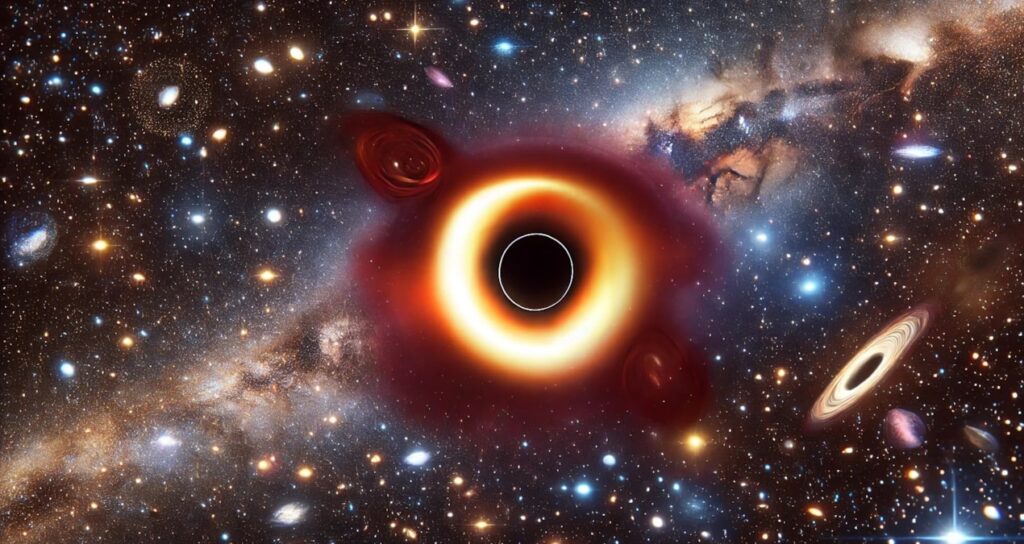Polish physicist Dr. Nikodem Poplawski has put forward an exciting theory that has long been lost and is now attracting renewed interest among scientists. In the center of a black hole lies a region where the gravitational field and spacetime curvature (“slope”) become infinite. This region is called a “gravitational singularity.” Poplawski, on the other hand, asks: “What if black holes do not contain any singularities?”
In his paper titled “Radial Motion in Einstein-Rosen Bridge,” Poplawski suggests instead that the center of a black hole could contain a pathway to another universe.
In the Disney film “Black Hole,” scientists flew a spacecraft through a black hole to a hellish world.
The theory also proposes that our own universe could have been created in a similar way. The Polish physicist believes that the other side of the black hole is connected to a so-called white hole through an Einstein-Rosen bridge (also known as a wormhole).
A white hole is the opposite of a black hole: while a black hole swallows all light and matter, a white hole expels them back out.
Poplawski believes that this cosmic tunnel system could explain the formation of all matter in our universe. 13.8 billion years ago, matter gathered in a massive black hole (within an even larger universe) could have been suddenly expelled through a kind of “back door” to create a new universe. That is, ours. The initial flow of matter into the new universe could also explain its expansion.
